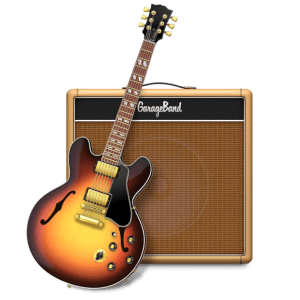A multi-functional digital audio workstation, GarageBand has been the motivation behind the growing popularity of podcasting. This software has improved podcasting progress by bringing down the barriers to create quality audios. Because of GarageBand, a lot of iOS and macOS users have been able to produce thriving podcasts. It allows creating, editing, and mixing sound effects to create professional audios.
Through this article, we will be discovering how GarageBand is useful in the process of creating a podcast.
Setting up a new project
- After opening the GarageBand app, on the main screen, go to New Podcast Episode and type in a name to the podcast file.
- The podcast screen varies a bit from the screen for GarageBand music. Above the list of tracks, lies a special Podcast Track that can be used for dragging photos or other artworks from the iPhoto Library or any other library.
Choosing the voice type
An essential step towards creating a podcast is plugging in the microphone, and choosing an audio track. Irrespective of whether it is a male or female voice, you can go ahead and simply click on the red-colored Record button and start talking.
Moreover, once recorded, the audio file can be edited and tweaked easily; hence there is no worry about the initial recording.
Adding effects to the podcast
After the recording is done, the next crucial step is to edit the podcast using various GarageBand tools. Below is a compilation of the most astonishing editing tools by GarageBand that’ll help you complete a great podcast:
- Trim
This tool helps you crop an audio file, by shortening it. All you need to do is drag it in from the side. The trim option can be used to trim a specific part of the music file music, to have an appropriate track length, as per the requirement.
- Split Regions At Playhead
Next up is the Split Regions at Playhead tool. Using this tool, you can split a selected section into two individual regions, and these can then be edited independently. This is an efficient time-saving tool that assists in connecting separate sections of a track. The ‘Delete and Move’ option assists in eliminating the part of the track you wish to exclude, carrying the sections right after to move ahead in the blank space.
- Automation
After editing a track using any of the above tools, the resulting audio may seem like an abruptly ending file. Now, since GarageBand does not offer a Fade tool to help you work on the edited file, you will have to make do with the automation tool to work on the volume changes.
Volume automation is a default GarageBand tool. However, a lot of distinct tools can also be automated by simply selecting from the track’s dropdown list.
Export the final podcast
It is essential to monitor the final track before moving on to the exporting part. Once that is done, the only step to achieve is, exporting the track, as a separate audio clip, to upload the podcast for further sharing.
It is noteworthy that MP3 is the most preferred format for podcasting, mainly due to its compressed size. And, the smaller the size of a file, the easier and quicker downloads, and a better listening experience. Yet, to be sure of the quality of the audio, it is suggested that you also export an uncompressed WAV file. The host, as well as the mastering tools like Auphonic, will directly encode the file into MP3 format in the process. Hence, if you are not sure about the file formats, it is advised to upload the file at a high-quality file format.
Once the podcast file has been exported successfully, you can listen to the outcome to check for any errors or probable quality issues. After all of this is done and your podcast is good to go, upload the same to Auphonic, or straight to the host for distribution purpose.
The end note
These are the primary go-to steps that must be followed, to record a podcast using GarageBand. Once you are through with these, you will have the knowledge that can be used in future projects. Overall, these steps do not only guarantee a way to help you to create a podcast but also serve as the audio quality checker.
